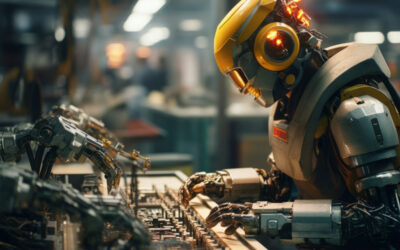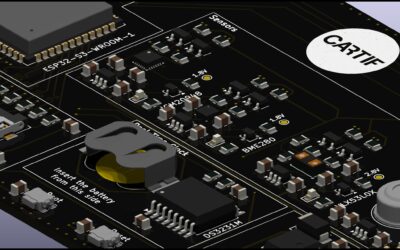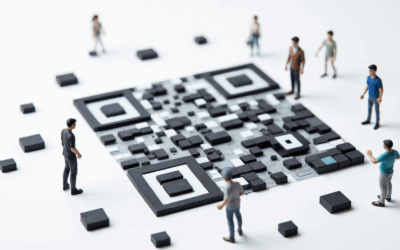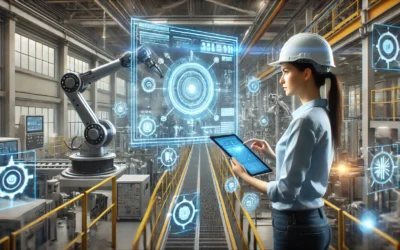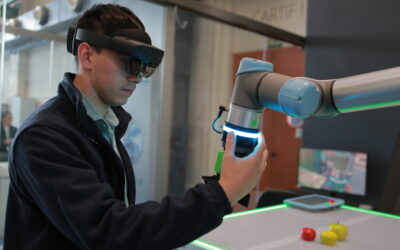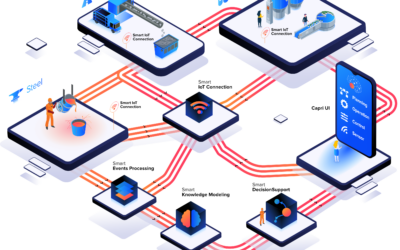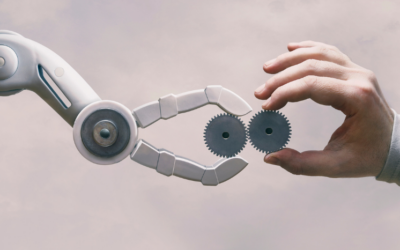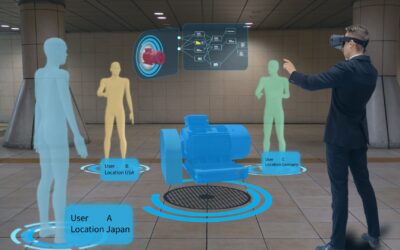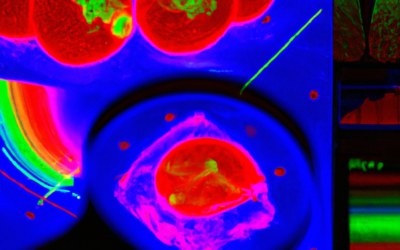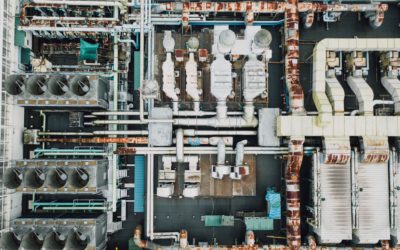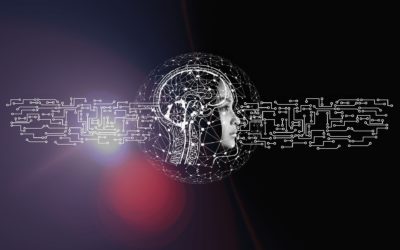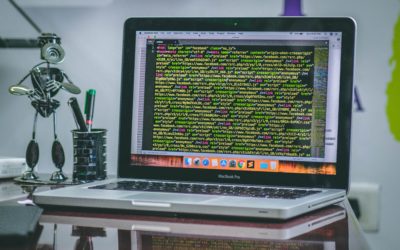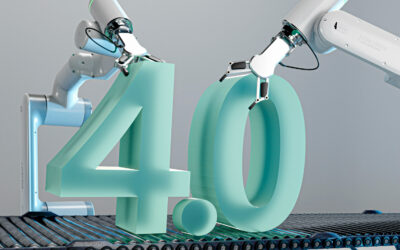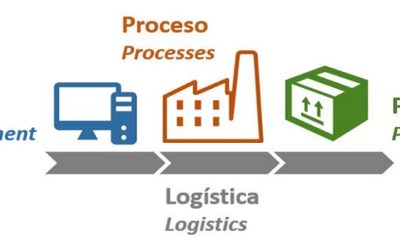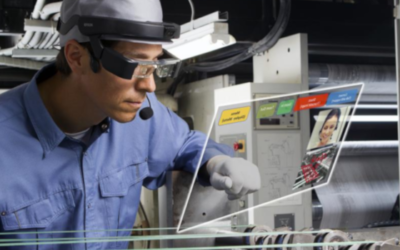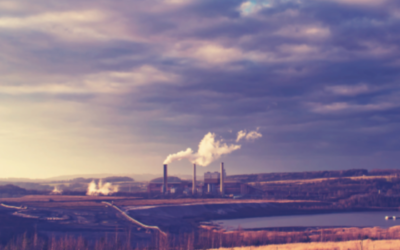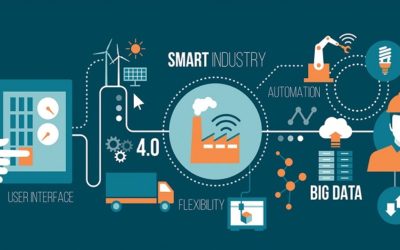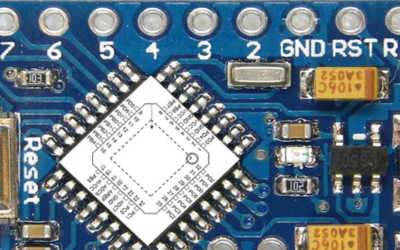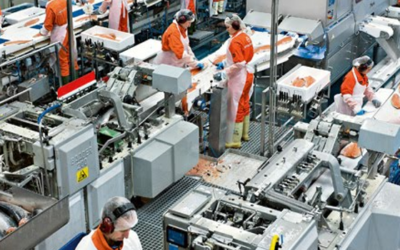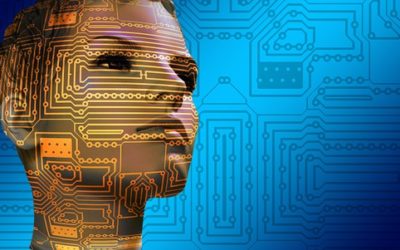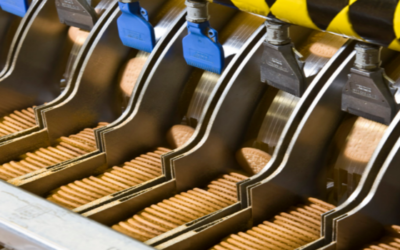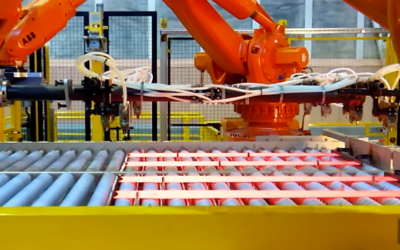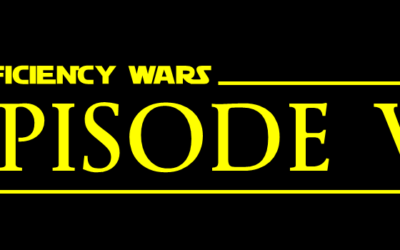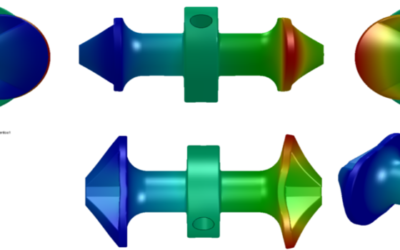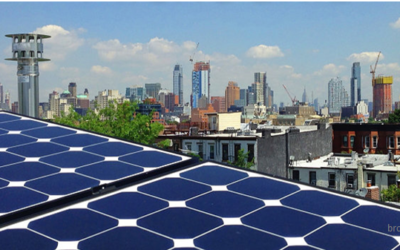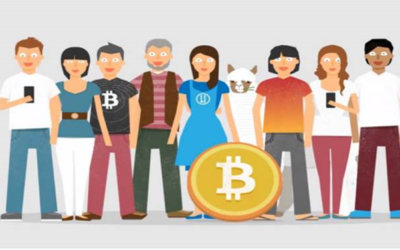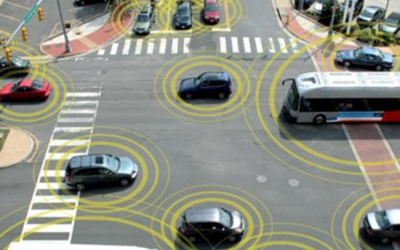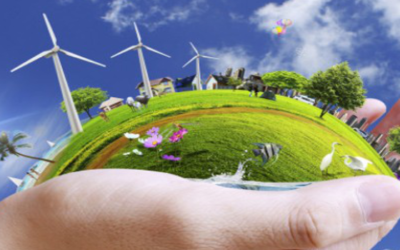BLOG CARTIF
Industry


Industry
ROS4HRI: a common language for human-robot interaction in Industry 5.0
ROS4HRI is an open standard that enables robots to understand and respond to human signals—voice, gestures, or emotions—in a unified way, boosting human-robot interaction in Industry 5.0.
The impact of PCB design on reliability and electronic performance
In sectors as diverse as construction, logistics, heritage, and industry, the Internet of Things (IoT) has become a key factor in driving digitalization, improving efficiency, and opening up new opportunities for innovation. When designing an electronic device,...
A journey through production
Imagine if every product that reaches your hands could explain its story: where it comes from, what materials it was made with, what processes it went through, how its quality was guaranteed and under what conditions it was transported to its destination. We live in...
Interoperability in Industry 5.0: the Key Role of FIWARE
In the world of software development, interoperability is the ability of different devices, systems, and applications to work together in a coordinated manner, much like musicians in the Vienna Symphony Orchestra, regardless of their origin or technology. This concept...
Artificial Intelligence: Driving the next industrial revolution
Artificial intelligence (AI) is no longer the stuff of futuristic fantasy; it has become a tangible part of our everyday lives. From personalised recommendations on streaming platforms to optimising logistics processes in a factory, AI is everywhere. What's...
Behind the Curtain: Explainable Artificial Intelligence
Artificial intelligence (AI) is contributing to the transformation of a large number of sectors, from suggesting a song to analyzing our health status via a watch, along with manufacturing industry. One hindrance on this transformation relates to the overall...
Beyond reality. Extended reality
Imagine finding out that the pilot of your next flight will be using Apple Vision Pro while in command of the plane. Would you feel comfortable boarding that plane? If your answer is no, you might think the pilot is reckless and that your life is at risk. On the other...
CAPRI, pathway and results
When a Project finalises, it is the time to recapitulate, time to collect all the information and the experience gained along. Along the three years and a half working in CAPRI project there has been a lot of time to do things, to obtain very good results or to feel...
LASER: from death ray to the swiss knife of technology
"LA man discovers science-fiction death ray". This was the shocking headline that appeared in a Los Angeles newspaper in July 1960. A few weeks earlier, on 16 May 1960, the American engineer and physicist Theodore H. Maiman at Hughes Research Laboratories had...
The evolution of HRIs (Human-robot interaction). More agile and adaptable to different scenarios
In a world where humans perform tasks that involve manipulating objects, such as lifting, dragging or interacting with them (for example, when we use our beloved mobile phones or we eat an apple), these actions are performed subconsciously, naturally. It is our senses...
Digital Twin: Industry 4.0 in its digitised form
Digital twin has become one of the main trends or "mantras" in relation to digitalisation. It is practically a synonym of a product, something that you can buy as a commodity for a company. At CARTIF, we believe that the digital twin concept is a synonym of the...
Managing industrial data: prevention is better than cure
In the field of health, it is known that is more effective prevent illnesses than treat them once they have manifested themselves. In a similar way, it can be apply in the context of industrial data, its continuous and proactive maintenance helps to avoid the need of...
Terahertz technologies in industry
In this post, I would like to talk about devices capable of acquiring images in the Terahertz spectral range, an emerging technology with great potential for implementation in industry, especially in the agri-food sector. Currrently, machine vision systems used in...
Elicitation of knowledge: learning of expert operators
Elicitation (from the latin elicitus "induced" and elicere "to catch") is a term associated with psychology that refers to the fluid transfer of information from one human being to another by means of language. The knowledge elicitation applied to industry is a...
Artificial Intelligence, an intelligence that needs non-artificial data
The common denominator of artificial intelligence is the need of available, good qualilty and real data to advance in the different procedures needed to create and train the models. Practical research in AI often lacks available and reliable datasets so the...
Robust solutions with simple ideas
Machine vision is one of the enablers of Industry 4.0 with increased integration in production lines, especially in the quality control of products and processes. In recent years, a real revolution is taking place in this field with the integration of Artificial...
Hard to measure
Researchers are increasingly confronted with situations of "digitalise" something that has not been digitalised before, temperatures, pressures, energy consumes,etc. for these cases we look for measure systems or a sensor in a commercial catalogue: a temperature...
AI potential for process industry and its sustainability
The impact of Artificial Intelligence (AI) is highly recognized as a key driver of the industrial digital revolution together with data and robotics 1 2. To increase AI deployment that is practically and economically feasible in industrial sectors, we need AI...
Deep Learning in Computer Vision
Computer vision is a discipline that has made it possible to control different production processes in industry and other sectors for many years. Actions as common as the shopping process in a supermarket require vision techniques such as scanning barcodes. Until a...
Artificial Intelligence and Intelligent Data Analysis: statistics and math, not magic!!
Artificial Intelligence, Machine Learning, Deep Learning, Smart Devices, terms that we are constantly bombarded with in the media, making us believe that these technologies are capable of doing anything and solving any problem we face. Nothing is further from...
Cybersecurity in the industrial environment, are we ready? Defence comes next…
As we mentioned in our previous post, companies OT (Operation Technology) networks are no exception from suffering cyberattacks. So far, there have been multiple cyber-attacks suffered by industrial companies since the first registered one in 2010 that had a direct...
Cybersecurity in industrial environments. Are we ready? The attacks that are still to come…
Identity and user data theft, ransomware, phishing, pharming or denial-of-service attacks are terms that appear more and more in the media1,2,3,4. The hyper-connected world in which we live also affects companies that, as productive entities, are increasingly exposed...
The century of the photon
Most likely, the word photonics is not part of yourusual vocabulary, but the technologies developed in this field are increasignly used in the daily course of our lives. If we pay attention to the definition of photonics given by dictionaries such as Merriam-Webster´...
Consciousness is not a computation, it is quantum
A lot of the new hype arounf the Artificial Intelligence (AI) is directly related with the potentiality for imitate or overcome the capabilities of the human brain (in terms of data volume managed and process speed) using computers. The neuroscientist Henry Markram in...
Industry 5.0, seriously?
It seems unbelievable, but 5 years have passed since CARTIF inaugurated the blog with the post on Industry 4.0 in which I analysed some of the keys to the so-called “fourth industrial revolution” and how it could affect the industry in our country. It has always...
IoT technology to improve the efficiency of industrial companies
With the promise of 75 billion devices connected to the Internet around the world in 2025, the 'Internet of Things' (IoT) opens the door to a future of opportunities for companies to optimize their processes, whether in the form of manufacturing their products,...
Augmented reality (AR) will transform the way you work
The Augmented Reality (AR) after some fairly lukewarm beginnings is being seen as a technology with a promising future. Much of this change of image comes from the Pokémon Go phenomenon that about two years ago showed the augmented reality to the general public in a...
Reduction of costs and emissions in factories: real cases
Industry is one of the sectors with a highest energy demand, being the fossil fuels the main energy source used in the most of the industrial processes. The utilization of this type of fuels in the manufacture process of the industries generates a waste heat that is...
New challenges on smart manufacturing industry
Big Data as one of the so called “digital enablers” of Industry 4.0 sits at the core of promising technologies to contribute to the revolution at factories where vast amounts of data (whether they are big or small) hides enormous amount of knowledge and potential...
Hardware and software ‘easy-to-use’
There are many research and innovation projects whose objective is the design and development of an electronic device, whose purpose is to satisfy main requirements of the market. In general, we look for devices with the necessary capacity to acquire information about...
How to improve your processing plant without large investments?
Any processing plant - continuous, batch, hybrid - can improve its economic, safety and environmental indicators in two ways: improving its processing equipment or improving the control of those equipments. The improvement of processing equipment is usually a task...
New applications of Deep Learning
A little more than a year ago, in another post of this blog, our colleague Sergio Saludes already commented what is deep learning and detailed several of its applications (such as the victory of a machine based on these networks over the world champion of Go,...
The dynamic electricity prices and the washing machines with initiative
The day all of us enjoy electricity dynamic prices thanks to the smart grid, we will see how the washing machine and other home appliances come into life. And they will do it to allow us to pay less for the energy they need to do their duties. This will be one of the...
Best practices in energy efficiency in industry projects
Traditionally, factors that were taken into account in manufacturing processes were economic, management, production, etc. However, this situation has changed in recent years. Energy efficiency and sustainable management are fundamental aspects that many companies...
Artificial vision in hot stamping
With this post, I would like to try to show a very clear example where, the intelligent use of a suitable artificial vision system can solve a major problem in a production line at a reasonable price. The body of our vehicle consists of a multitude of metallic pieces,...
Efficiency Wars (Episode VI) – The Return of Bohr
Low cost alternative innovations. The barometer and how to think outside the box I finished my previous post commenting how an ILM approach --to disaggregate energy consumption in a factory- can be an unbeatable challenge, financially, for those factories with highly...
Digital Transformation, to the moon and back
It is July 20th, 1969, 20:18:04 UTC and after 102 hours, 45 minutes and 39.9 seconds of travel "the eagle has landed" and Neil is about to descend the ladder and touch an unknown surface for the first time: "That's one small step for [a] man, one giant leap for...
Efficiency Wars (Episode V) – The ROI strikes back
Watch out, the game might not be worth the candle. In my previous post, I explained how beneficial could be for a factory to disaggregate (by direct measure and not by estimations based on nominal values) the energy consumptions of the factory between the different...
Efficiency Wars (Episode IV) – A new (efficiency) hope
Disaggregation of consumptions? Why? To avoid the dark side Within the world of management, the aphorism "If you can't measure it, you can't improve it" is often attributed to the twentieth century Austrian philosopher, Peter Drucker, whose writings contributed...
What could mechanical simulation do for companies?
The use of computer environments in the mechanical engineering field has grown significantly in recent decades. Most companies in the industry are aware of the benefits of computer-aided design (CAD) and engineering (CAE) systems. The traditional tasks associated with...
Blockchain and the electric market customers
In a previous post I tried to explain the Blockchain technology. In this occasion I will try to explain how customers in the electric market could benefit from it. One of the most interesting Blockchain’s applications are the smart contracts. While a traditional...
What is ‘Blockchain’?
The “Blockchain” is the technology supporting Bitcoin, the infamous cryptocurrency known for being the first widely used and reportedly used in some criminal activities. Blockchain is also the technology underlying Ethereum, which is also a means to implement smart...
Machine vision for quality control
Machine vision is behind many of the great advances in the automation of the industry since it allows the control of quality of 100% of the production in processes with high cadences. A non-automated process can be inspected by the operators themselves in the...
Cyber-physical systems. Are we closer to Terminator’s ‘judgment day’?
“It is April 21, 2011. SKYNET, the Superintelligence artificial system who became self-aware 2 days earlier has launched a nuclear attack on us humans. The April 19, SKYNET system, formed by millions of computer severs all across the world, initiated a geometric...
Data value and knowledge extraction
Last November I attend third Big Data Value Association (BDVA) Summit in Valencia. The BDVA is a fully self-financed non-profit organization under Belgium law that represents the ‘private’ side in Big Data Value Public Private Partnership (Big Data Value PPP), while...
3D printing will revolution the way to manufacture
Is 3D printing one of the main engines of a new industrial revolution that will completely change the way we manufacture and consume products? From the reproduction of vital organs to the construction of shelters in space, so revolutionary is the future of 3D...
The Internet of Things and the electricity bill
Internet of Things (IoT) are becoming common. These are the objects that connect to Internet by themselves to carry out their duties with no human intervention. One possible application that can help us to save money and to reduce greenhouse gasses emissions is the...
Why is smart the Smart Grid?
It is not easy to find a definition for Smart Grid that summarizes every objective, topic and technology included under this concept. Searching and surfing the web, one can find long and detailed descriptions including many of the Smart Grids related topics, or other...
